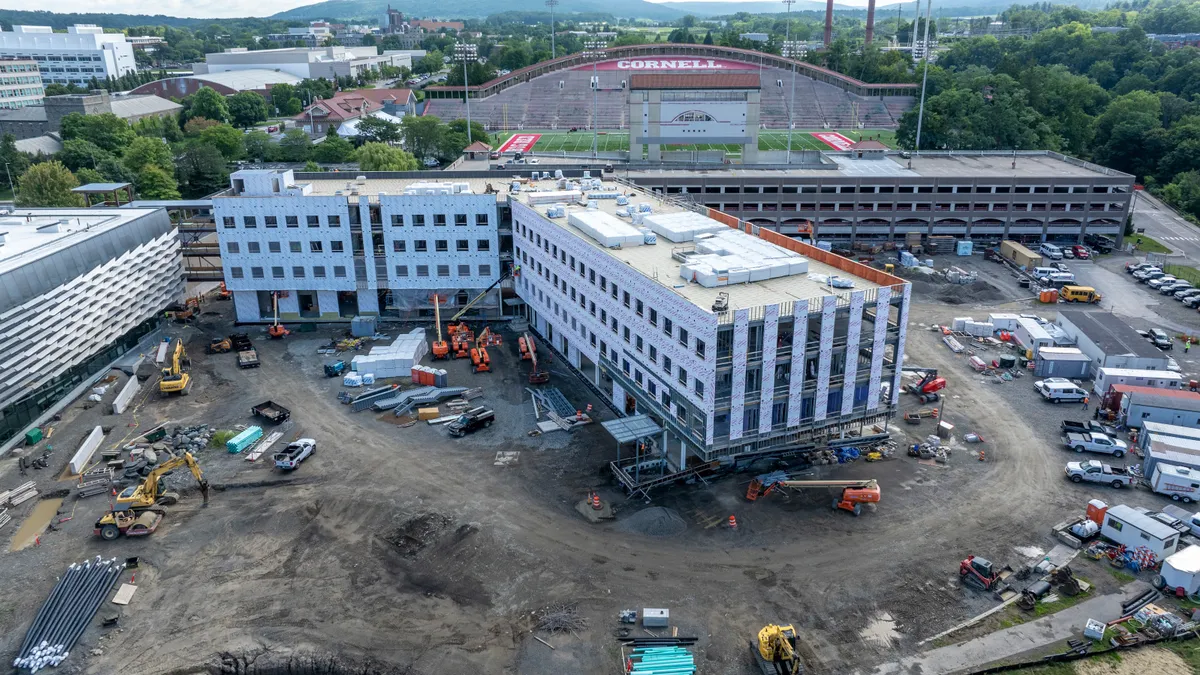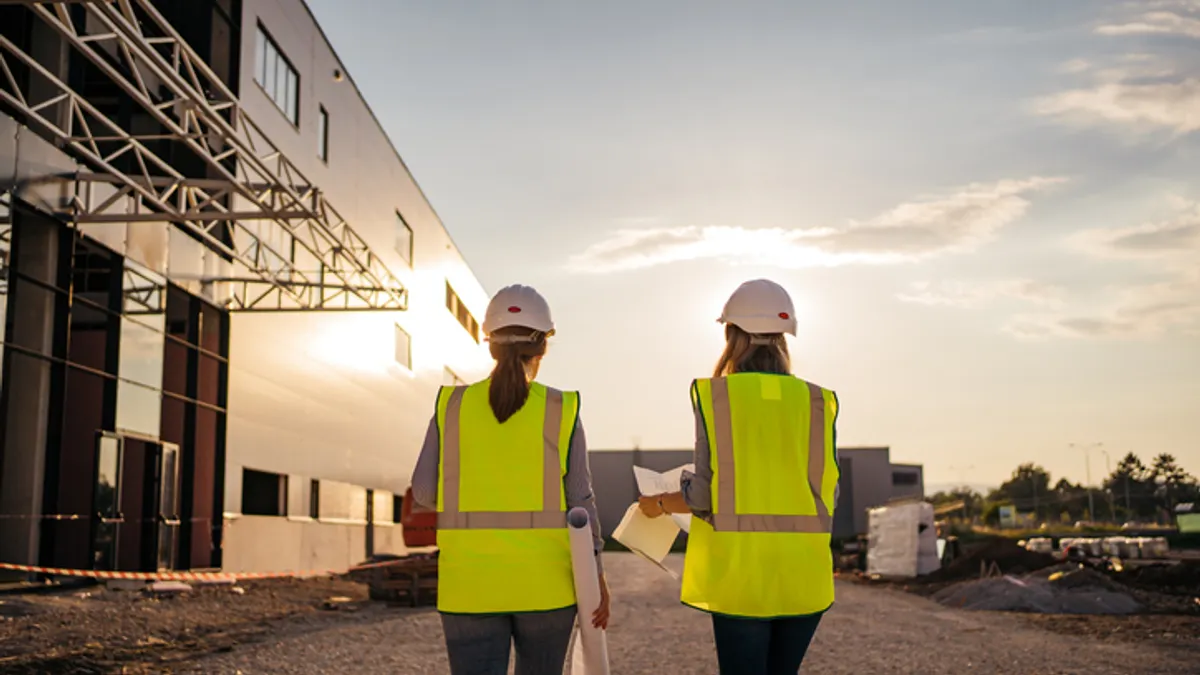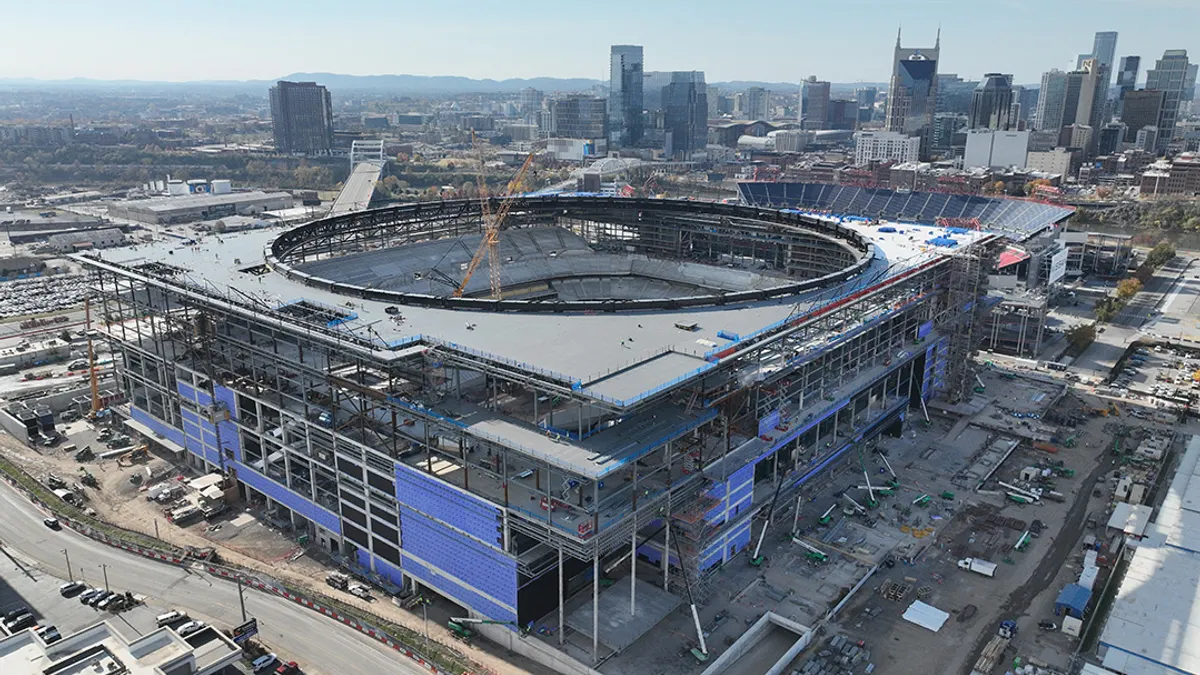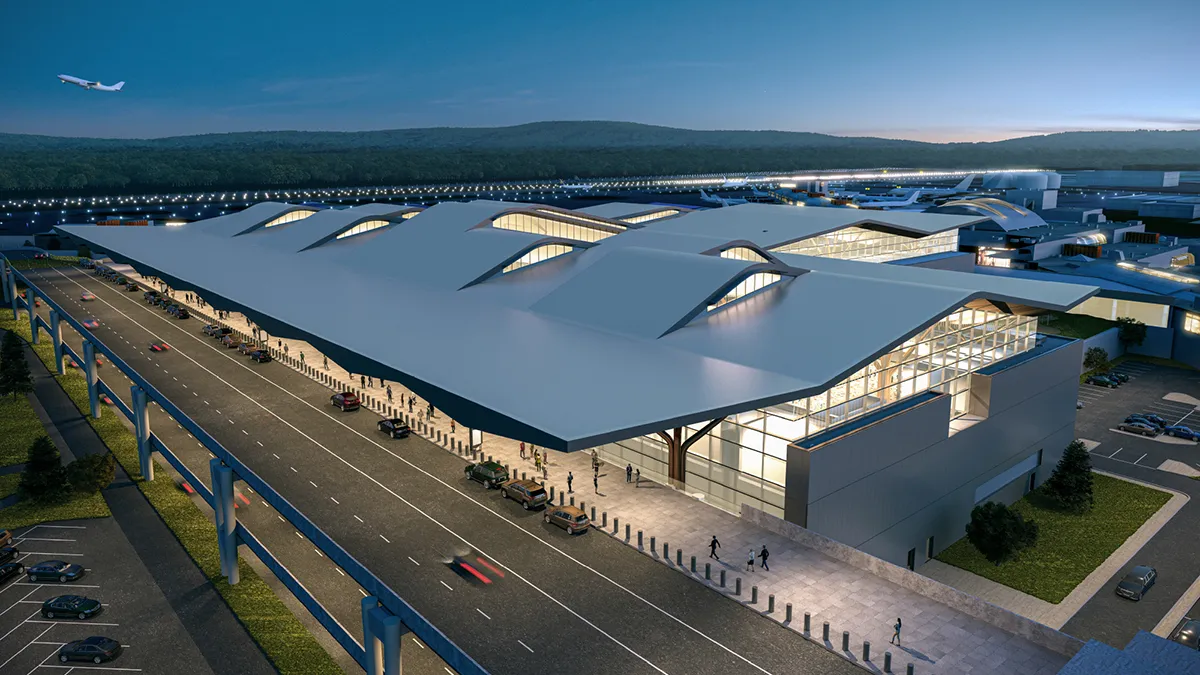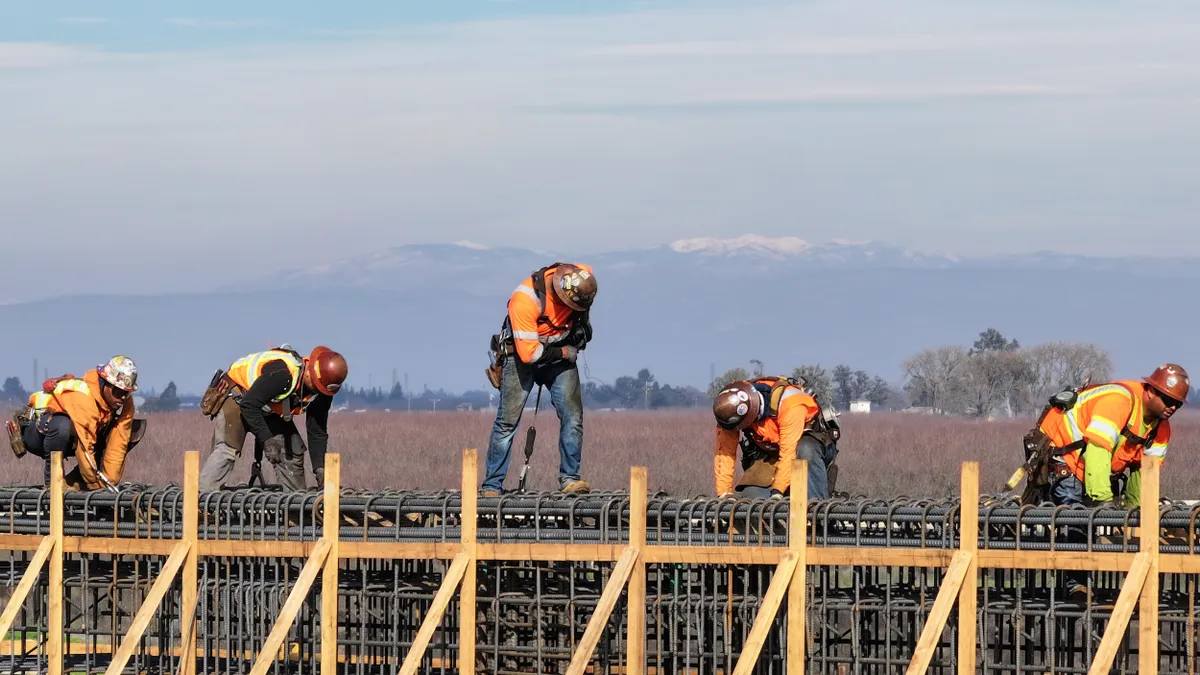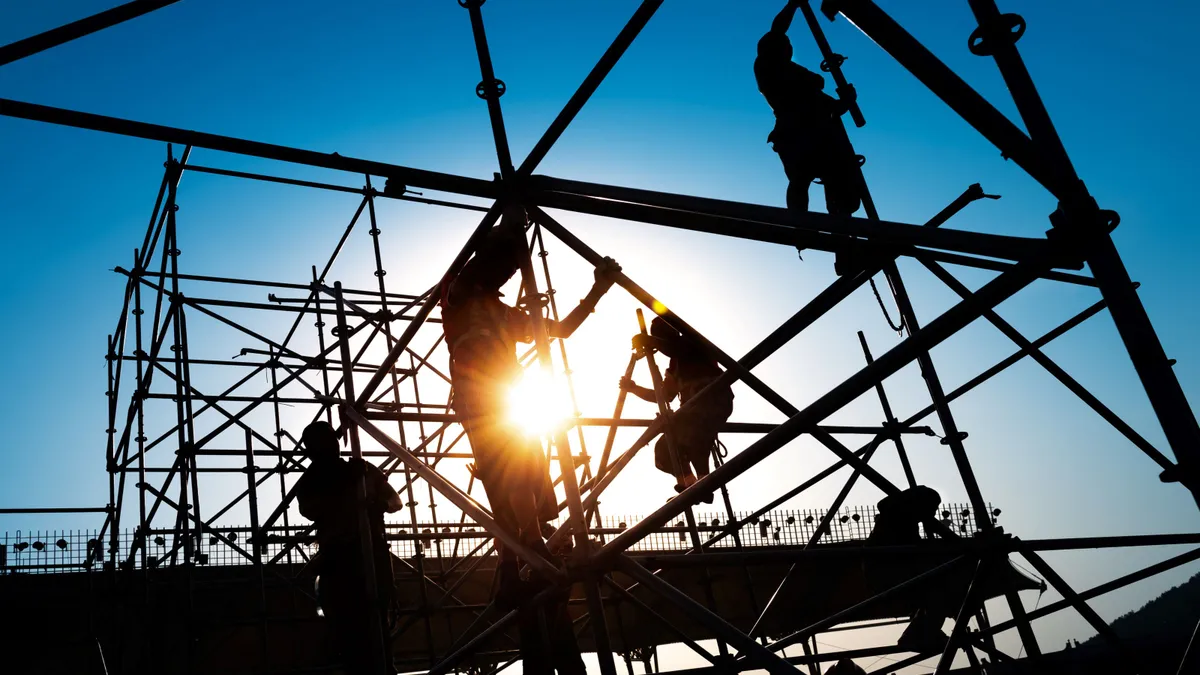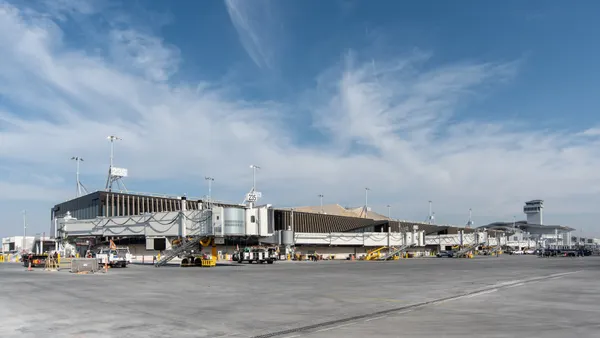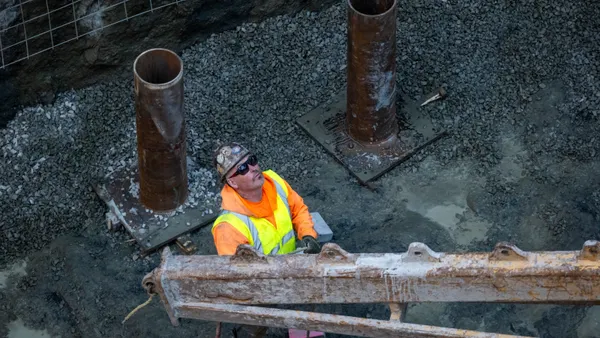Contractors are juggling optimism and unease entering 2025.
From interest rate cuts to a new presidential administration, construction pros are keeping close tabs on key issues and trends that could drive costs up or unlock new opportunities.
Though the year’s outlook is uncertain, below are a few of the indicators that will have the greatest impact on building activity, according to economists and other industry experts.
Indicator 1: Construction costs
The possibility of sweeping tariffs under the upcoming Trump administration continues to loom large over the producer price index as contractors brace for potential impacts on materials including steel, lumber and MEP components.
Ultimately, the full impact will depend on policy enforcement and trade relations, said Luke Lillehaugen, senior economist at S&P Global Market Intelligence.
“Should the proposed 25% tariff on all goods from Canada be implemented, the North American lumber supply would see disruptions as prices would go up significantly and shortages would materialize in the U.S. before domestic production could be ramped up to meet demand,” said Lillehaugen. “Meanwhile, prices would fall in Canada due to oversupply.”

Steel also could be exposed, said Christos Rigoutsos, Lillehaugen’s colleague and fellow senior economist at S&P. Steel prices have dropped significantly in the past year, but tariffs could counteract these recent cost reductions.
“Rebar and wire rod prices are likely to be affected, as Mexico and Canada are some of the biggest exporters of these products in the U.S., leading to the possibility of even higher price floors,” Rigoutsos said.
Costs for material skyrocketed during the COVID-19 pandemic and although prices have since stabilized, they still sit much higher than pre-2020. In fact, inputs to nonresidential construction have increased 39.2% since February 2020, according to the U.S. Bureau of Labor Statistics.
But there may be a silver lining, said Bryan Ehrlich, president of San Antonio, Texas-based NCE General Contractors. He said tariffs could force global suppliers to lower prices in order to stay competitive in the United States.
“We are getting a lot closer to the free market determining prices again,” said Ehrlich. “The tariffs will force the out-of-country suppliers to find ways to cut their prices in order to maintain their competitiveness in the marketplace.”
However, these across-the-board tariffs could play out differently for the construction industry, said Michael Guckes, chief economist at Cincinnati-based ConstructConnect. That’s because, even if demand for domestic materials increases, manufacturers may struggle to ramp up production.

“Without a significant increase in domestic laborers, manufacturers’ output will be bound by the limits of what little available labor they can find,” said Guckes. “As we experienced during COVID, this could create a new surge in wages which would only increase product costs and make consumers further worse off.”
In other words, tariffs could leave contractors in a worse spot — higher costs for imports and limited domestic supply, said Guckes. That puts pressure on material prices to rise again.
Indicator 2: Inflation
Inflation continues to pose challenges for contractors and developers, said Chad Prinkey, CEO of Well Built Construction Consulting, a Baltimore-based firm that delivers strategic consulting, facilitation services and peer roundtables for construction executives.
“The big number I believe we all need to continue watching is inflation,” said Prinkey. “I may just be a little gun-shy from the hyperinflation in 2021 and 2022, but the efforts necessary to tame inflation once it gets out of control have a particularly painful impact on developer-driven construction.”
This impact is already visible across the industry, as rising material costs, labor shortages and margin pressures strain the industry’s ability to adapt, said Ehrlich.
“You can see projects that were done five to six years ago at, say, $1 million, they are $1.8 million to $2 million now,” said Ehrlich. “There’s nothing we can do about it, especially in the specialty trades. The costs are just going up.”

To overcome these pressures, some contractors are leaning into value engineering, said Ehrlich.
“With our customers, we were talking about a building, and what’s cheaper going with material A or material B,” said Ehrlich. “The more cost exercises that we could provide, and the more creative we can get in these value engineering options, it mitigates some of that inflation.”
Nevertheless, inflation could continue to tick back up in 2025, said Anirban Basu, chief economist at Associated Builders and Contractors. That could keep these financial pressures high, he said.
“Inflation is still meaningfully higher than that 2% Federal Reserve target,” said Basu. “That suggests to me that the Federal Reserve is going to have a tough time justifying further rate cuts going forward.”
That cautious outlook aligns with the Fed’s actions to close last year. When it cut rates on Dec. 18 for the third time in 2024, the central bank signaled it may favor less easing of monetary policy in 2025.
Indicator 3: Interest rates
Despite the Fed’s new hawkish outlook, the cuts that have already happened could unlock fresh opportunities for project starts, and will thus remain a focal point for construction professionals.
Even modest rate cuts can significantly improve financing conditions for commercial construction, said Chris Fisher, managing principal at Troy, Michigan-based consulting group Ducker Carlisle. He pointed to growth in optimism among developers and investors as rates eased in 2024.

“A small movement in interest rates on a large-spend level in the millions will make a big difference,” said Fisher.
But that optimism could be short-lived.
The Federal Reserve appears unlikely to continue aggressive rate cuts in 2025, as inflation lingers stubbornly above the 2% target, said Basu. That means borrowing costs could remain elevated.
“I think there’s going to be a slowdown in the economy next year,” said Basu. “Expect to slow down because of these higher interest rates.”
Still, contractors continue to plow through relatively healthy backlog levels. In other words, despite high interest rates and indications the Fed will slow its interest rate cut campaign, contractors are still pushing forward, said Ehrlich.
“If you’re running a business, you’re not gambling on interest rates going down,” said Ehrlich. “It makes deals harder to get done, but it’s just the current state of the environment.”



